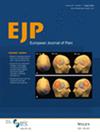Differences Among Veterans With Chronic Overlapping Pain Conditions and Other Chronic Pain: Baseline Results From the LAMP Pain Management Trial
Abstract
Background
Chronic overlapping pain conditions (COPCs) are a constellation of disorders posited to share an underlying pain mechanism (nociplastic pain). Unfortunately, individuals with COPCs are under-represented in clinical research. The current study aimed to determine COPC prevalence among participants enrolled in a pragmatic clinical trial and compare those with COPCs to those with non-COPCs across several domains.
Methods
Learning to Apply Mindfulness to Pain (LAMP) study baseline data of veterans with chronic pain (N = 811) were utilised. COPC diagnoses were determined using ICD-10 codes within electronic health records. Group differences across pain and functioning-related domains were compared with and without adjustment for age and gender.
Results
Among participants with COPCs (54%), most were diagnosed with only one COPC (74%). Chronic lower back pain (71%) and migraine (28%) were the most common. Participants with COPCs were younger and more likely to be female relative to those with non-COPCs. The COPC subset was also more likely to be diagnosed with PTSD, depressive disorders and sleep disorders (p < 0.05). Those with COPCs also reported greater pain severity and interference, more impaired health-related quality of life, greater pain catastrophising and lower pain self-efficacy than participants without COPCs (p < 0.05).
Conclusions
COPCs were common among a sample of veterans in a pragmatic clinical trial. Several baseline differences emerged indicating veterans with COPCs experience greater mental health concerns and endorse distinct pain characteristics and pain mediators. Future research is needed to further characterise this recently defined and under-represented group.
Significance Statement
Individuals with COPCs are medically complex, yet are understudied and underrepresented within pain trials research. COPCs, which predominantly impact women, are also understudied within U.S. veterans. Our findings highlight how veterans with COPCs are participating in clinical research even when interventions are not tailored to their unique characteristics. Our work also contributes to a nuanced understanding of this disease burden and is among the first to describe differences among veterans with COPCs and veterans with chronic pain but without COPCs.

 求助内容:
求助内容: 应助结果提醒方式:
应助结果提醒方式:


